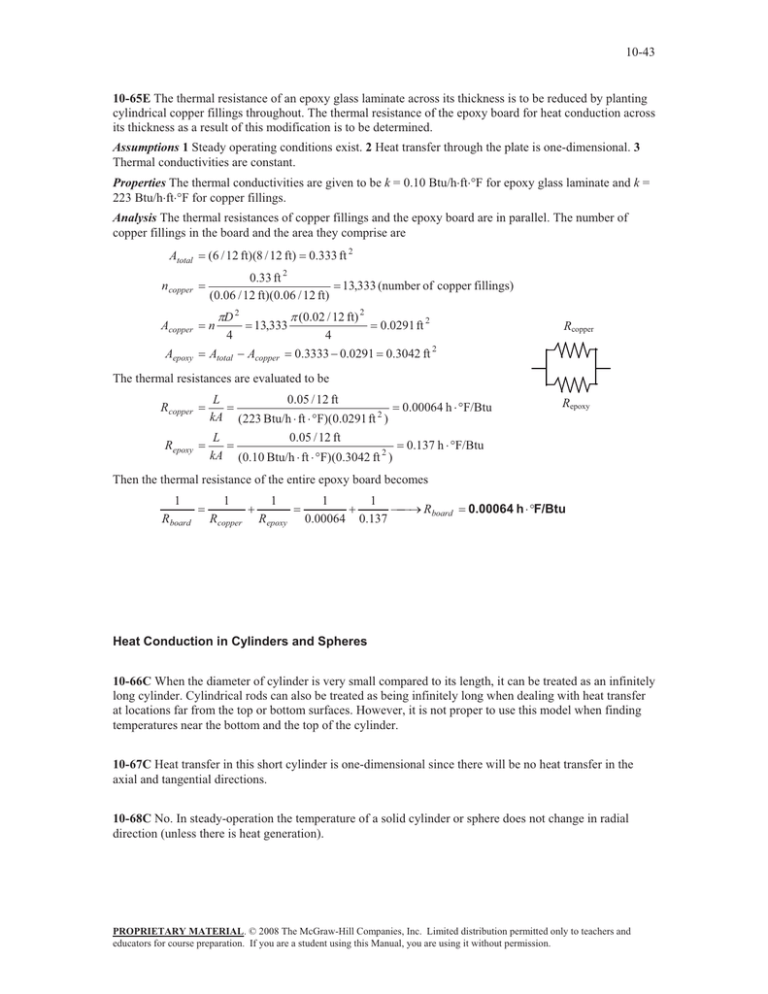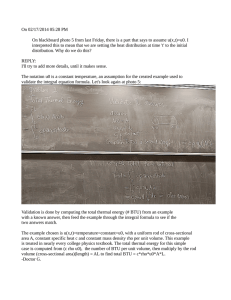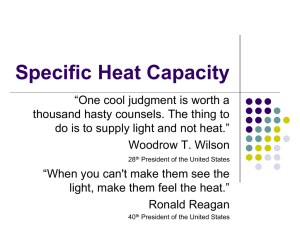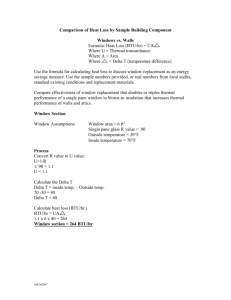10-43 cylindrical copper fillings throughout. The thermal resistance of the epoxy... 10-65E
advertisement

10-43 10-65E The thermal resistance of an epoxy glass laminate across its thickness is to be reduced by planting cylindrical copper fillings throughout. The thermal resistance of the epoxy board for heat conduction across its thickness as a result of this modification is to be determined. Assumptions 1 Steady operating conditions exist. 2 Heat transfer through the plate is one-dimensional. 3 Thermal conductivities are constant. Properties The thermal conductivities are given to be k = 0.10 Btu/hft°F for epoxy glass laminate and k = 223 Btu/hft°F for copper fillings. Analysis The thermal resistances of copper fillings and the epoxy board are in parallel. The number of copper fillings in the board and the area they comprise are Atotal (6 / 12 ft)(8 / 12 ft) 0.333 ft 2 n copper 0.33 ft 2 (0.06 / 12 ft)(0.06 / 12 ft) Acopper n Aepoxy SD 2 4 13,333 Atotal Acopper 13,333 (number of copper fillings) S (0.02 / 12 ft) 2 0.0291 ft 2 4 0.3333 0.0291 0.3042 ft 2 Rcopper The thermal resistances are evaluated to be Rcopper L kA Repoxy L kA 0.05 / 12 ft (223 Btu/h ft qF)(0.0291 ft 2 ) 0.05 / 12 ft (0.10 Btu/h ft qF)(0.3042 ft 2 ) 0.00064 h qF/Btu Repoxy 0.137 h qF/Btu Then the thermal resistance of the entire epoxy board becomes 1 1 Rboard Rcopper 1 Repoxy 1 1 o Rboard 0.00064 0.137 0.00064 h qF/Btu Heat Conduction in Cylinders and Spheres 10-66C When the diameter of cylinder is very small compared to its length, it can be treated as an infinitely long cylinder. Cylindrical rods can also be treated as being infinitely long when dealing with heat transfer at locations far from the top or bottom surfaces. However, it is not proper to use this model when finding temperatures near the bottom and the top of the cylinder. 10-67C Heat transfer in this short cylinder is one-dimensional since there will be no heat transfer in the axial and tangential directions. 10-68C No. In steady-operation the temperature of a solid cylinder or sphere does not change in radial direction (unless there is heat generation). PROPRIETARY MATERIAL. © 2008 The McGraw-Hill Companies, Inc. Limited distribution permitted only to teachers and educators for course preparation. If you are a student using this Manual, you are using it without permission.






